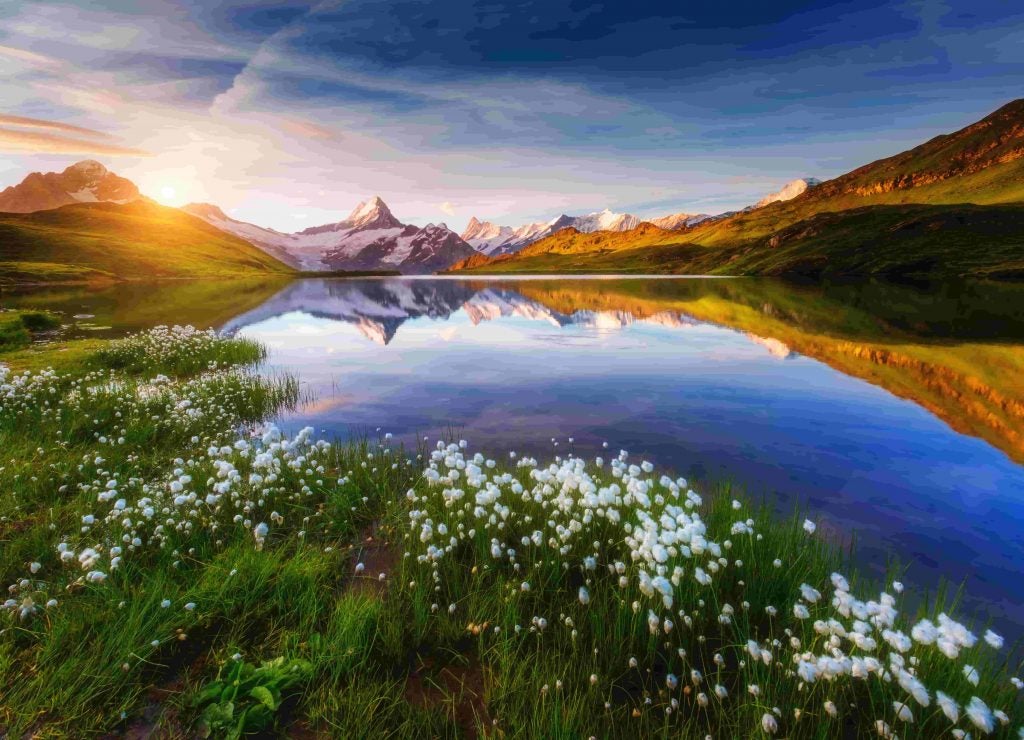This post is brought to you by our friends at Brunton—creators of a simple camping compass that will help you find your way, whether you’re backpacking or birding.
Have you ever woken up to a dewy morning in your tent and wondered what bird was just chirping you out of slumber?
Birding is a fun way to learn about those songs that keep you company while you’re camping and hiking. It’s a fun activity for all ages and can be done just about anywhere. As long as you have binoculars, an ID guide, and a healthy dose of curiosity, you can go birding wherever your adventure takes you.
Birding Basics
When you sign up for birding, you’re signing up to participate in nature’s scavenger hunt. You will never be short of bird species to hear, see, and discover while you’re out in the wild.
Birding has low barriers to entry given that it is not a gear intensive activity. So once you have your binoculars—and they do not need to be top of the line—or a monocular, and your ID guide, you’ll be ready to explore this new angle of appreciation for the outdoors.
Field guides will provide information on what species are in a given area, what seasons birds inhabit that area, and maps of their flight range.

Flock of pelicans. Photo by Bill Williams on Unsplash.
If you’re new to birding and need a place to get started, check out BBC’s The Life of Birds; it’ll fill your head with a plethora of fun birding facts. For example, did you know that the closest relative to the Tyrannosaurus Rex is the chicken? Yes, birds are pretty cool.
10 Destinations for Birding Enthusiasts
Camping is a simple way to get started in birding. You can hike near the campground with ease, or spot birds just outside of your tent. These 10 spots will get you started on your birding adventures:
1. Saguaro National Park, AZ
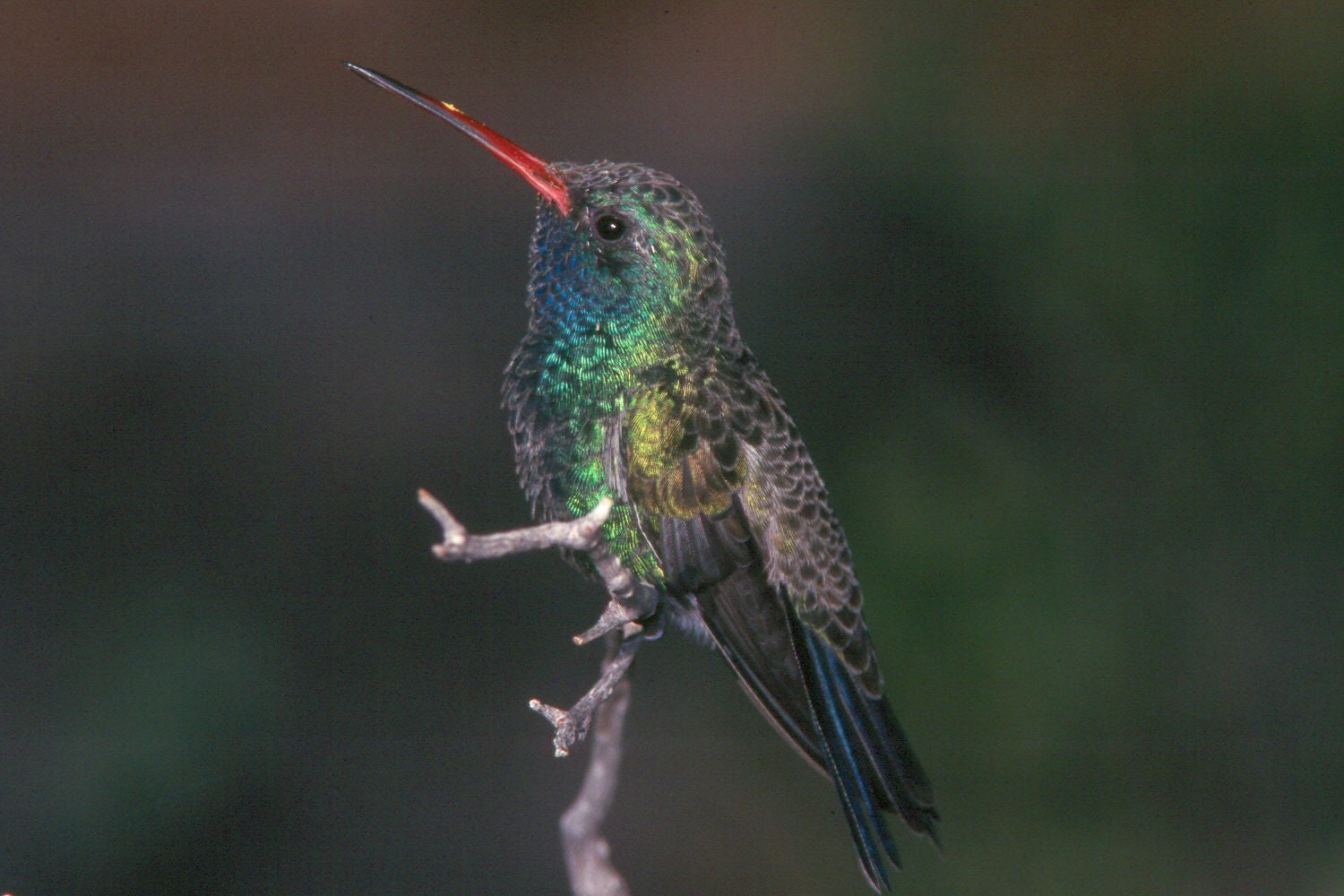
Broad-billed Hummingbird. Photo courtesy of NPS Saguaro National Park.
Home to more than 200 bird species, Saguaro National Park boasts expansive blue skies, making it easy to see birds take flight above the park. By day, birders can spot hummingbirds (there are 18 species in the park alone), woodpeckers, quail, and red-tailed hawks. By night, the great-horned owls come out and feast.
Campground recommendation: Manning Camp
“I love this National Park. It’s beautiful and mysterious. Despite close spaces to camp, it was a lot of fun. It was quiet and people were respectful. Land landscape is amazing and the cactus forests are beautiful.” — The Dyrt camper Chloe D.
Camp Here2. Copper River Delta, AK
Nearly 6 million birds pay a visit to the Copper River Delta in late April and early May. And that’s not to say this area is without birds all other times of the year—roughly 20 million birds stop through the Copper River Delta throughout the year. If you want good odds of seeing shorebirds and waterfowl, this is the place to visit.
Campground Recommendation: McKinley Lake Cabin
Camp Here3. Assateague Island National Seashore, MD and VA
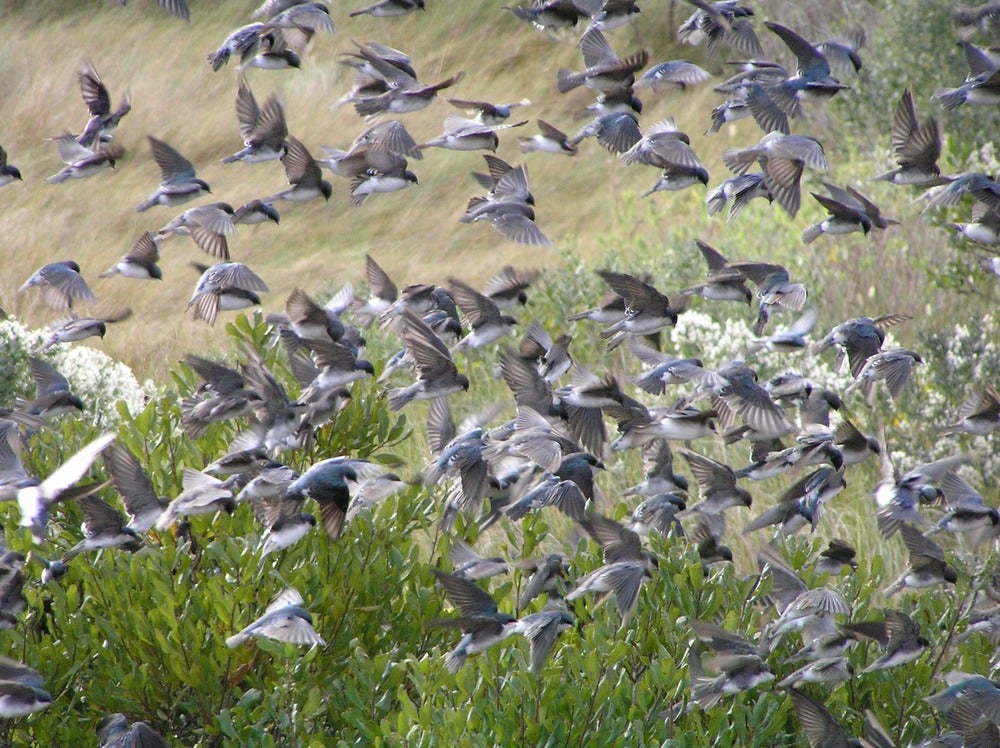
Tree Swallows. Photo courtesy of NPS.
Assateague Island is known for its herd of wild horses that can be seen galloping down the beach or grazing in the sand dunes. But it’s also a spot that many different types of birds migrate through since it’s located along the Atlantic migratory flyway. In the summer months, beginning birders can catch glimpses of various migrating shorebirds. The island is also home to warblers, piping plovers, woodpeckers, loons, and owls.
Campground recommendation: Little Levels Campground
“It is a walk-in site, meaning once the beach closes at dusk, the vehicles are gone and you’re left only with other people who have backpacked in (if anyone). You have the whole beach to yourself until the public starts arriving again in the morning. A perfect sunrise spot!” — The Dyrt Camper Rachel B.
Camp Here4. Cape May, NJ
Cape May is one of the oldest resort towns in the U.S. and houses historic Victorian architecture that makes you feel like you’re in a beach town from the 1800s. While the ocean is available for recreation, Cape May is also a great place to go birding. Like Assateague Island, Cape May is along the path for many migratory species. It has plenty of habitat for various shore birds to enjoy including salt marshes, fresh water marshes, ponds, saltwater, and open fields.
Campground recommendation: Beachcomber Camping Resort
“A beautiful wooded campground close to the beaches of Cape May, New Jersey. Very family oriented and really a great place for adults too. We stayed in a teepee and it is one of the coolest places I have camped.” — The Dyrt camper Denise D.
Camp Here5. Bosque del Apache National Wildlife Refuge, NM
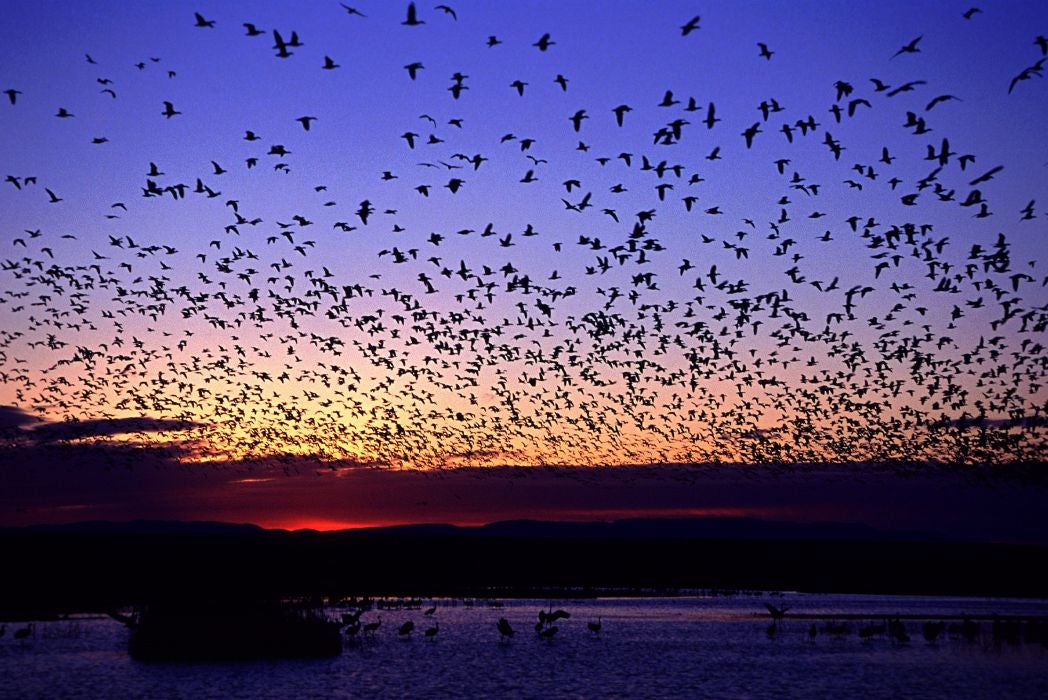
Large flock of birds fly at sunrise. Photo courtesy of USDOT.
If you’re just getting into birding, Bosque del Apache National Wildlife Refuge will inspire you to keep birding. Sandhill cranes migrate to this area in the winter and put on a show for all to see. At sunrise, sandhill cranes take off and fill the pastel colored sky. While at sunset, these same cranes dive back into their pond at full force, with the striking Chupadera Mountains towering behind them.
Campground Recommendation: Elephant Butte Lake State Park
“This campground is clean, cheap and right on the lake. The amount of people varies. Good place to chill or swim.” — The Dyrt camper Tyler M.
Camp HereWorld’s First “Zero Waste” Safari Coming to Yellowstone in 2019
6. Acadia National Park, ME
With cliffs jutting into the oceans, various freshwater lakes, and thick forest, Acadia National Park offers plenty of ecological variety, attracting about 250 bird species. Shorebirds will line the seashore of the Atlantic, while ruby-throated hummingbirds will dance in the trees of the forest. It’s a great place to take in a hike while you are birding for new species.
Campground Recommendation: Somes Sound View Campground
“This campground was great. Beautiful view of the water. Highly recommend the waterfront sites. Some of the sites are small but the view makes up for it.” — The Dyrt camper Jessica P.
Camp Here7. J.N. Ding Darling National Wildlife Refuge, FL
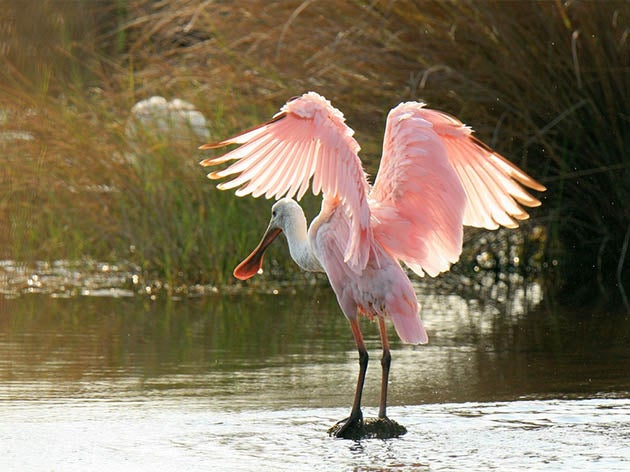
Roseate Spoonbill. Photo courtesy of Craig Kittendorf/USFWS.
Known as America’s Birding Hotspot, J.N. Ding Darling National Wildlife Refuge is full of opportunities for birding. More than 245 species make this wildlife refuge their home during various times of year. The “Big Five” are a big draw for birders. They include The American White Pelican, Mangrove Cuckoo, Reddish Egret, Roseate Spoonbill, and Yellow-Crown Night-Heron. The Roseate Spoonbill is a refuge favorite, thanks to its hot pink color.
Campground Recommendation: Periwinkle Park and Campground
“The campground is less than a mile from the beach, easily walkable and even easier to bike. The campsite is designed to acomódate RV camping and long term mobile home set ups, however there are some lots available for tents as well.” — The Dyrt camper Megan K.
Camp Here8. Blackwater Falls State Park, WV
Blackwater Falls State Park is known as one of the most beautiful spots in the wild and wonderful state of West Virginia. The patiences required of birding comes easy when you’re surrounded by cascading waterfalls and vast green ravines. Here, birders can find Purple Finch, Golden-crowned Kinglet, Hermit Thrush, Northern Waterthrush, and various warblers and sparrows. Blackwater Falls also offers a Bird Discovery Weekend for those looking for some guidance.
“There’s plenty to do in the park including walking down the steps to view its namesake waterfall, and hikes to beautiful views of the gorge. Make time to drive to nearby Thomas and visit the Purple Fiddle for a drink or ice cream while listening to live music.” — The Dyrt camper Sean G.
Camp Here9. Point Reyes National Seashore, CA
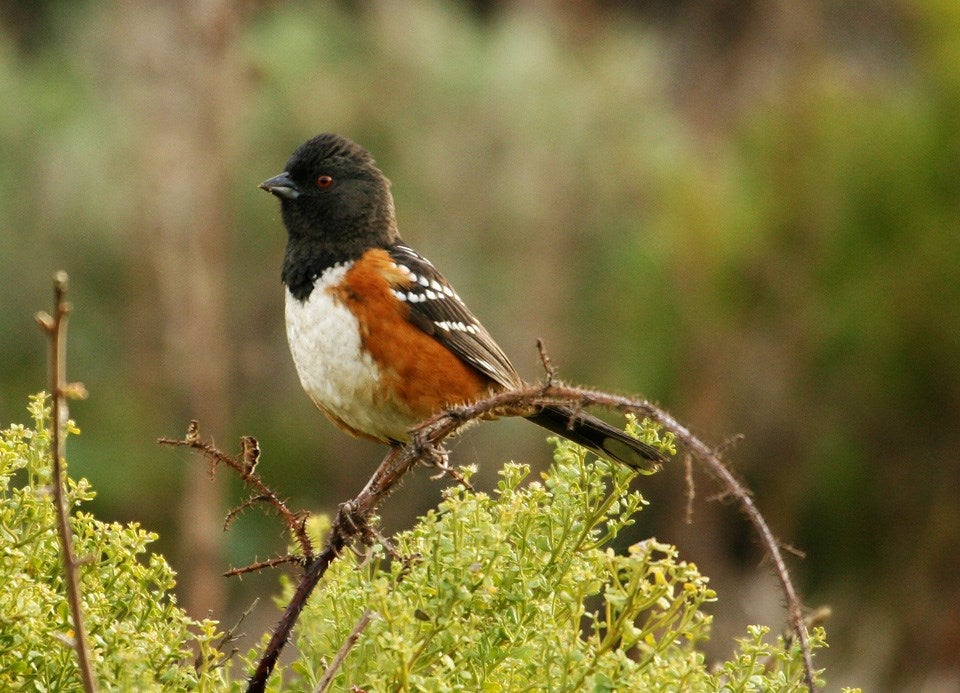
Spotted Towhee. Photo courtesy of Will Elder/NPS.
A peninsula not too far from San Francisco, Point Reyes National Seashore attracts a lot of birdlife. More than 490 species have been recorded in the Point Reyes’ history. While hiking through the area, you might see warblers, sparrows, kinglets, thrushes, wrens, woodpeckers, hummingbirds, and owls. Many shorebirds also make their appearance near the wetlands and lagoons of the national seashore.
Campground Recommendation: Wildcat Camp
“Really great site right next to the water and beach. The hike in is pretty easy and beautiful. We had fun making a fire on the beach at night.” — The Dyrt camper Madelyn G.
Camp Here10. Big Bend National Park, TX
Big Bend National Park rides the border of Texas and Mexico, and is roughly the size of Rhode Island. The park offers sheer cliffs down to river floors, the rugged Chisos mountains, and the vast landscape of the Chihuahuan Desert—all of which are home to various bird species. While you’ll likely spot hummingbirds and Vermilion Flycatchers during your visit, it’s the Colima Warbler you’ll want to search for. This is a Mexican species that nests nowhere else in North America except for the Chisos Mountains. So birders will have to put in the miles to see this rare one.
Campground Recommendation: La Noria Campground
“La Noria #1 should get a campsite medal! It was seriously everything I could have ever ever wanted in a backcountry site! Awesome fauna, awesome views and no people!” — The Dyrt camper Tori M.
Camp HereRelated Campgrounds:
- Jekyll Island Campground, Jekyll Island, GA



